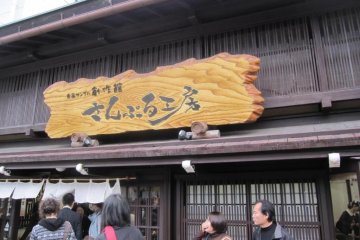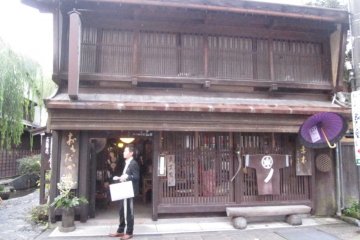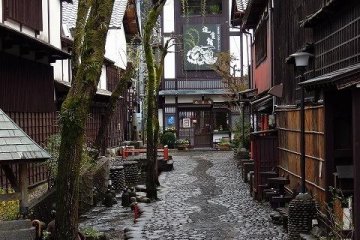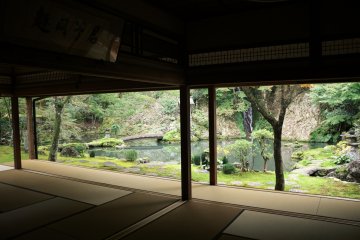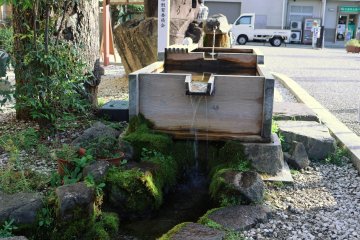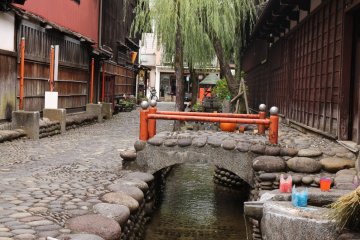For a landlocked city whose most famous attraction is a hilltop castle, tit may come as a surprise that the true heart of Gujo-Hachiman is made of stunningly pure H2O. Coming directly from the surrounding mountains, the town's pure water is not only a major source of local pride, it's a way of life.
Small channels carry water alongside and under the town's streets, leading to numerous public water basins called mizubune. The multi-tiered basins are used for everything from drinking (using the water straight from the nozzle) to washing vegetables, rinsing laundry, or cooling your food or drinks. Each of the tiered tubs is used for different purposes, keeping the water appropriately clean at each level. Keep an eye out for a small cup sitting near the spigot - that's how you know it's good for drinking. How good is the water? It's fantastic. In fact, Gujo-Hachiman bottles its own water and uses its local supply to make nihonshu and other types of alcohol, which are all of a very high-grade thanks to the pure and delicious water it comes from.
The water-carrying channels themselves are another quaint touch to this beautiful town. Running everywhere, they add ambiance in looks as well as in sound - a soothing babble is omnipresent. Some of the waterways are for public use (being used for different purposes in certain areas, to ensure their cleanliness), while others are private, and you can even find beautiful fish swimming in front of some people's houses.
A walk up a narrow stone pathway leads to Sogi Sui, a popular shrine to the god of water, and extended mizubune with four small pools. This spring was named after the 15th century poet Iio Sogi, who composed a poem while sitting beside it. It earned a place on the "100 Best Waters of Japan" list, and is a beautiful and quiet corner of the town.
A stroll through the streets of Gujo-Hachiman turns up additional signs of water. The town itself is situated on the Yoshida and Kodara Rivers, making for plenty of scenic bridges, riverside cafes, and gorgeous scenery at any time of day. Fishing and wading in the rivers is common, as is leaping into them from the top of one of the city's bridges, a jump which is a kind of rite of passage for children. Even the manhole covers of Gujo-Hachiman have an underwater theme.
A visit to the local Jion-Zenji Temple brings about another face of the town's water-centric ways. This temple belongs to the Zen school of Buddhism, and features one of the most incredible gardens visitors will ever encounter. A breathtakingly pristine oasis centered around a pond, the Tetsuso-en Garden also features a waterfall whose graceful sounds are sure to put visitors into a meditative state. Or, settle yourself near the suikin kutsu, an earthen jar set below a slow trickle of water dripping from a bamboo nozzle. As water sprinkles into the top jar, it also drips into a second, upside-down jar below, whose faint rhythmic and soothing sound you can enjoy with some quiet and concentration. Not enough water for you? Even the temple's zen rock garden has an aqua theme, designed around larger rocks representing a crane and turtle nestled around an open patch of water (represented by the small, white rocks making up the garden's base). Still not enough? Head into the temple's hondo (main hall) to find a statue of the water god standing to the left of the Buddha.
Gujo-Hachiman is a wonderful travel destination, and proof that the best water can be found miles and miles away from the sea.



